When we talk about important women in conservation, names like Jane Goodall and Gretta Thunberg might come to mind. However, there have been many more women from around the world whose contributions to conservation escape our attention. This International Women’s Day, we wanted to highlight a few lesser-known female conservationists from around the world who have made a difference for our planet.
Berta Cáceres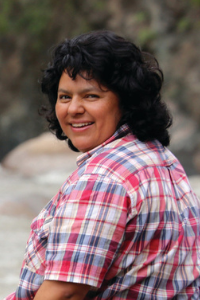
Berta Cáceres was born in Honduras in 1971. As a member of the Lenca people, Cáceres valued the land around her, but she was all too familiar with the political and social strife that led to environmental destruction. Illegal logging and mining were common, and many dams were built to create power for equipment, as well as divert rivers from valuable mining and plantation land. When she was a student, Cáceres founded the Council of Popular and Indigenous Organizations of Honduras (COPINH) to address and combat these issues, despite Honduras being an incredibly dangerous place for environmental activists. Cáceres knew her work put her life in danger, but in 2013 she stated, “There are many things I still want to do in this world but I have never once considered giving up fighting for our territory, for a life with dignity, because our fight is legitimate.”
One of her best known grassroots campaigns was concerned with a dam being built on the Rio Gualcarque, which would be detrimental to Lenca communities and limit access to food, water and medicine. The developers, one of the world’s largest dam builders, had broken international law by not consulting with local tribes, and Cáceres was able to shut down the entire project, earning her the Goldman Environmental Prize in 2015. Sadly, Cáceres was killed in her home in 2016, but her foundation lives on and continues to fight for environmental protections in Honduras.
Isatou Ceesay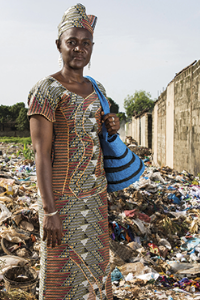
In Gambia, poverty and cultural norms have caused many girls to drop out of school at a young age, including Isatou Ceesay, born in 1972. However, Ceesay refused to believe that a lack of a formal education meant that she could not better her community. She observed that her village was plagued by colorful plastic bags and piles of trash, which killed plants, injured livestock and provided breeding grounds for disease carrying mosquitoes. However, she also observed that these bags never decomposed, so in 1997 she founded the Njau Recycling and Income Generation Group, an initiative that turned local waste into upcycled purses, bags, rugs and more. Today, Ceesay's organization helps more than 100 women earn an income. To learn more about her program, buy a bag, or support her children’s book “One Plastic Bag,” visit OnePlasticBag.com.
Mollie H. Beattie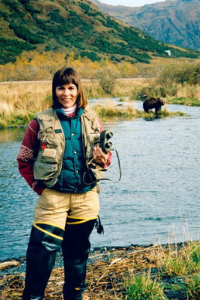
In 1993, Mollie Beattie was appointed as the first female director of the U.S. Fish and Wildlife Service by President Bill Clinton. Though her term was short, Beattie oversaw the reintroduction of the gray wolf into the northern Rocky Mountains, assisted in the addition of 15 national wildlife refuges and managed the signing of more than 100 habitat conservation plans with private landowners. Her vision for the future was also focused on nature and biodiversity. “When Americans are asked what the most pressing environmental issues are, they cite pollution issues such as toxic wastes and clean water,” she said in 1995. “Problems like loss of biodiversity, rapid depletion of natural resources and the international problems of population explosion are way down the list. And yet these are the issues that are of greatest importance to the long-term health of our world.” Sadly, in 1996, Beattie lost her battle with brain cancer, though she left a legacy that will not fade. Today a wilderness area is named for her in the Arctic National Wildlife Refuge.
Rosalie Barrow Edge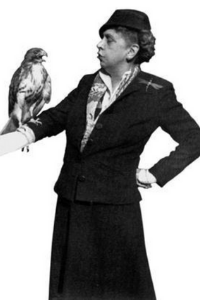
Rosalie Edge, born in 1877, was both a suffragette and advocate for birds. Edge first gained a love for birdwatching in the 1920’s. Unfortunately, the more she watched, the more she was horrified to discover the hunting of thousands of bald eagles throughout the Alaskan Territory. Existing conservation groups had not taken action because bald eagles weren’t rare at the time, but Edge responded “The time to protect a species is while it is still common.” In 1929, Edge founded the Emergency Conservation Committee, dedicated to protecting all species, both common and rare. Then in 1934, opened the Hawk Mountain Sanctuary (https://www.hawkmountain.org), the first ever refuge for birds of prey. Her extensive work in conservation led her to being dubbed “the only honest, unselfish, indomitable hellcat in the history of conservation” by The New Yorker. Her legacy also paved the way for research conducted by Rachel Carson, who linked the decline in the juvenile raptor population to the unregulated spraying of DDT and ultimately saved bald eagles from extinction.
Wangari Maathai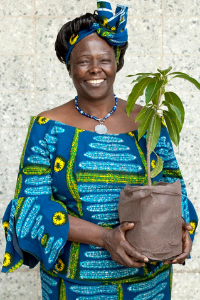
At the age of 20, Wangari Maathai was met with a rare opportunity for a Kenyan woman: college. 300 Kenyan students were selected for the Airlift Africa program in 1960, allowing them to attend an American university. After earning a master’s degree in biology, Professor Maathai returned to Kenya, both to heal the environment through her gained expertise, and to better the lives of local women. In 1977, she founded the Green Belt Movement (http://www.greenbeltmovement.org/ ), which teaches Kenyan women to earn income from sustainable planting and harvesting in previously deforested areas. Today, tens of thousands of women have risen out of poverty, and over 51 million trees have been planted. Maathai was the first African woman to receive the Nobel Peace Prize, awarded in 2004 for her work in conservation and women’s rights.
Winona LaDuke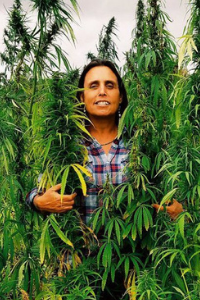
As a young girl in the 1960’s, Winona LaDuke grew up learning about the challenges facing Native Americans from her father, an Objibwe man from Minnesota's White Earth Reservation. The Objibwe tribe has always had a traditional connection to the land. However, as LaDuke got older, she also saw the potential for the sustainable and eco-friendly production of everything, from food to energy. Her Minnesota non-profit, the White Earth Land Recovery Project (https://nativeharvest.com/), uses its label Native Harvest to cultivate wild rice and sell traditional foods and jewelry. LaDuke is also a cofounder of Honor the Earth (https://www.honorearth.org/ ), a Native-led organization that gives grants to environmental initiatives, which are also Native-run. "Power is in the Earth;” her website quotes, “it is in your relationship to the Earth." By living as an example of this relationship, LaDuke hopes that more people will see the value of sustainable living.
